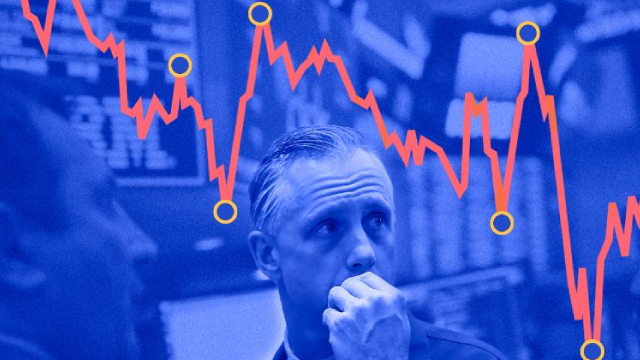January’s Surprise: Inflation, Treasury Yields, and the Economic Weather Report
Brace yourselves, dear readers, as we delve into the exciting world of economic indicators and their impact on our financial lives! January brought a surprise package in the form of a 0.5% rise in the Consumer Price Index (CPI), an increase that spurred Treasury yields and sent stocks tumbling. But what does it all mean? Let’s unravel this economic conundrum together.
The CPI’s January Surprise
The Consumer Price Index measures the average change in prices over time for a basket of goods and services. A rise in the CPI indicates inflation, which can erode purchasing power and potentially lead to higher interest rates. January’s increase was a surprise, as economists had predicted a more modest 0.3% rise.
Treasury Yields and Stocks: A Tale of Two Markets
The CPI’s unexpected rise led to a surge in Treasury yields, which move inversely to bond prices. This means that when yields rise, bond prices fall. The yield on the 10-year Treasury note reached a three-year high, sending a ripple effect through the stock market. Stocks, particularly those in the technology and growth sectors, took a hit as investors sought safer havens in bonds.
Inflation-Indexed Treasury Bonds: A Hedge Against Inflation, But With Risks
Amidst the inflationary pressures and volatile markets, some investors may be looking to inflation-indexed Treasury bonds as a hedge against rising prices. These bonds adjust their principal and interest payments based on changes in the CPI. However, they come with their own set of risks, including the US government’s growing fiscal pressures and potential debt monetization.
Gold and Real Interest Rates: A Bond Market Indicator
Another interesting development in the bond market is the spread between gold and real interest rates. Real interest rates, which are adjusted for inflation, have been on the rise alongside Treasury yields. Gold, a traditional hedge against inflation, has underperformed in recent months. Some market watchers believe this spread may signal the bond market is pricing in effective credit risk, as investors demand higher yields to compensate for the potential risks of holding bonds in this environment.
What Does It All Mean for You?
As an individual investor, this volatile economic landscape can be both challenging and exciting. It’s essential to understand how inflation, interest rates, and bond yields can impact your portfolio. Consider diversifying your investments and seeking professional advice from a financial advisor. Stay informed about economic indicators and market trends to make informed decisions.
A Global Perspective: The Ripple Effect
The economic developments in the US don’t exist in a vacuum. They can have far-reaching consequences for the global economy. For example, a stronger US dollar can make American exports more expensive for foreign buyers, potentially impacting trade and economic growth in other countries. Stay tuned for more updates on this developing story.
Conclusion: Navigating the Economic Weather Report
January’s economic surprises have sent shockwaves through financial markets, with inflation, Treasury yields, and stocks all reacting in unexpected ways. As investors, it’s crucial to stay informed and adapt to these changes. Diversify your portfolio, seek professional advice, and keep an eye on economic indicators. And remember, even in the midst of market volatility, there’s always room for growth and opportunity. Stay tuned for more updates as we continue to decipher the economic weather report!
- Understand the impact of inflation on your investments
- Consider inflation-indexed Treasury bonds as a hedge against inflation
- Stay informed about economic indicators and market trends
- Diversify your portfolio
- Seek professional advice from a financial advisor





